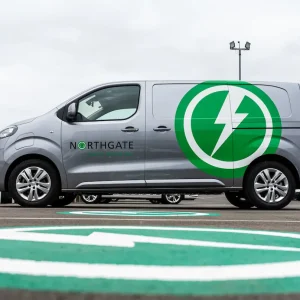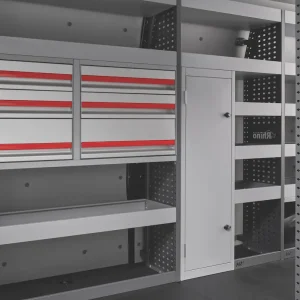Businesses operating crew vans could be hit by far higher tax demands than they anticipated because of a grey area over how such vehicles are defined for income tax purposes.
Accountancy firm Forrester Boyd has brought to What Van?’s attention the case of one of its clients, a Grimsby-based van operator, which has been billed for income tax at the more expensive car rate on a fleet of Mercedes-Benz Vito Dualiner crew vans, despite the manufacturer classifying such models as N1 commercial vehicles.
Paul Chappell, senior tax investigations manager at Forrester Boyd, says the business faces an income tax and national insurance demand for £85,000 for the three Vito crew vans over a four year period because HM Revenue & Customs (HMRC) adjudged that “these vehicles were not constructed primarily for the carry of goods”.
While disputing the demand, Chappell told What Van? his client had paid £21,055 in income tax and national insurance over the period based on its belief that the vehicles are vans.
“The income tax charge on a van is significantly lower than that of a car,” explains Chappell. “A standard charge applies for a van, whatever it costs.”
From 6 April 2015 the van benefit charge and van fuel benefit charge rose to £3,150 and £594 from £3090 and £581 respectively, giving a total annual charge of £3744 per vehicle.
However, car benefit charge is based on list price plus engine size, accessories and a percentage charge based on CO2 emissions. Chappell claims a £21,000 Mercedes Vito with CO2 of 205g/km would accrue a total charge of more than £15,000.
Forrester Boyd is taking the case to the Tax Tribunal on behalf of its client. Chappell says the client had switched to the Vitos having previously run double-cab pick-up trucks and adds: “Had they bought new double-cabs we would not be in this position.”
He says the operator kept the Vitos until the end of their life cycles but has now reverted to using pick-up trucks.
Chappell claims the case indicates HMRC considers that the primary purpose of crew vans is not for the carrying of goods and warned it could set a precedent for HMRC to challenge all operators of crew vans as to their purpose.
Manufactures are required to submit full detailed specifications under the EU Directive 2007/46/EU, which defines what is a car and what is a commercial vehicle.
Both the Vehicle Certification Industry (VCA) and the Driver and Vehicle Licensing Agency (DVLA) consider crew vans to be category N1 commercial vehicles, which are primarily constructed for carrying goods.
According to Chappell, the HMRC has deviated from this definition for income tax while still allowing the recovery of VAT on crew vans,
“On one hand the vehicle is a van, on the other a car,” he said.
HMRC acknowledges that the definitions of ‘car’ and ‘van’ are different for income tax and VAT purposes.
It is for income tax that the classifications can become blurred.
An HMRC spokesman told What Van?
“In order to be considered a van it must be of a construction primarily suited for carrying goods or other burdens. This means that a vehicle which is equally suitable for carrying passengers or goods will often be classified as a car for income tax purposes – it is the construction of the vehicle that is important, not the use that the vehicle is put to.”
According to HMRC’s definitions, the crew vans most likely to be classed as cars for both VAT and income tax are those with a payload of under one tonne and with a second row of seats, with or without windows.
Ford agrees – a spokeswoman told What Van? “The general rule for crew vans is that if it has less than a one tonne payload, you can’t claim VAT. Likewise if the passenger area is larger than the load carrying area.”
She says Ford’s Kombi vans have the passenger car M classification, so are taxed accordingly but adds that, unlike Mercedes and VW, all its double cab vans have bulkheads separating the passenger area from the load bay so are categorised primarily as goods carrying vehicles.
While Mercedes classifies its Vito Dualiners as LCVs it admits the tax status of vehicles is a matter for the user and their tax advisor to determine from published guidance.
A spokeswoman told What Van? “Manufacturers may regard a vehicle as a ‘commercial vehicle’, but this is not conclusive in relation to tax considerations and may be influenced by published guidance from the taxation authorities.”





